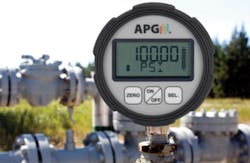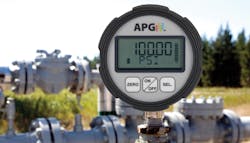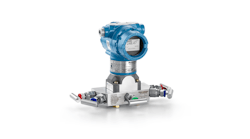Good question. We get asked this from time to time when someone has seen the advertised prices of cheap pressure transmitters. There are a lot of differences between a cheap $40 transmitter and a robust $400 unit.
It all boils down to accuracy and reliability and the necessary manufacturing processes to go along with them.
The old adage is true; you get what you pay for. When purchasing a pressure transmitter, you’re really buying:
- Linear Accuracy
- Thermal Performance/Accuracy
- Stability
- Materials & Construction
- Configuration Options
These five factors are what increase and decrease the cost of a pressure transmitter. Let’s take a look at each.
Linear Accuracy
This is the accuracy across the full scale that we list on our sensors. Typically, our pressure transducer’s error margin is 0.25 percent of the full scale. This means that on a 100 PSI transmitter, the most the sensors can be “off” is 0.25 PSI.
On a $40 pressure transmitter, the best you could expect is an error margin of 1 percent full scale. That error band is four times larger.
More importantly, when you loosen one tolerance, you’re frequently loosening all others as well.
Thermal Performance
A cheaper transducer will lack in more than just accuracy. Its thermal performance is also going to be worse. Something like 0.03 percent FS/C. In other words, the zero point will shift 0.03 percent of the full scale for every one degree Celsius change in temperature.
Ours is typically 0.02 percent FS/°F.
There are 33.8 F for every 1 C. So on a 100 PSI pressure transmitter, ours would shift 0.02 PSI for every 1 F change in temperature. A $40 unit would typically change a little more than 1 PSI for every 1 F change in temperature. That’s about 50 times less thermal stability.
Stability
Pressure transmitters experience a phenomenon known as drift. This is a direct result of the bonding layers that attach the sensing elements to the diaphragm. As the bonding layers settle over time, the output of the sensor drifts. The good news is that the drift is predictable and can be fixed by regular calibration.
The bad news is a cheap transducer will drift more, and require calibration more often. Part of our manufacturing process to reduce drift is to cure our transducers. This process includes pressuring our sensors up and down across a wide temperature range. This speeds up the process of settling the bonding layers through accelerated aging.
The curing process adds cost, and isn’t performed for the cheapest pressure transducers. This means the cheap transmitter will drift quite a bit after installation, though it will settle down eventually. So you may see long-term stability specs that are similar to a nicer sensor, but this only serves to hide the lack of stability out of the box.
Materials & Construction
You may have guessed that a cheaper transmitter will be made of lower quality materials, with a cruder construction. For example, our more expensive, robust pressure sensors are made of quality steel materials and built with durability in mind. We use laser welds, high-strength bolts and screws, better seals and gaskets (where applicable), and many are filled inside with an industrial potting to seal electronics from moisture and protects connections from vibration.
The cheaper the transducer, the more you need to question quality construction, materials, solder joints, wire connections, etc.
Configure Options
Making a sensor that is configurable adds considerable cost. It increases inventory in both volume and variety. It also increases the complexity of manufacturing products, because you have to build the same product in many different ways.
That’s why the $40 versions just don’t offer the variety of options that you’ll find in a $400-plus model.
A Place For Both
This article is meant to answer why some sensors cost more than others. It’s to set the record straight and promote healthy expectations. It’s NOT meant to insult or make fun of cheaper sensors. Those sensors have their place. You just need to know when and where to use each kind.
There certainly are applications that don’t require higher accuracy or strict tolerances on drift. They need only standard pressure ranges, process connections, and electrical connections. For these applications, save your money and buy an appropriate sensor.
For everything else, don’t skimp on quality.
Just remember, you get what you pay for. Make sure you pay for what you want to get.
This blog post originally appeared on Automation Products Group’s (APG), The Level Measurement Expert Blog. APG is an ISO 9001-certified company that specializes in liquid level sensor and pressure transducer design and manufacture.
Kelvin Findlay is an industry analyst and marketing manager at Automation Products Group, Inc. He is deeply involved in APG’s pressure and level measurement product lines for the Oil & Gas, Water & Wastewater, and Chemical industries. His passion for understanding how and why sensors are used in the field drives his research and APG’s product development. Mr. Findlay can be reached at 888 525-7300, ext. 1054, or [email protected].



